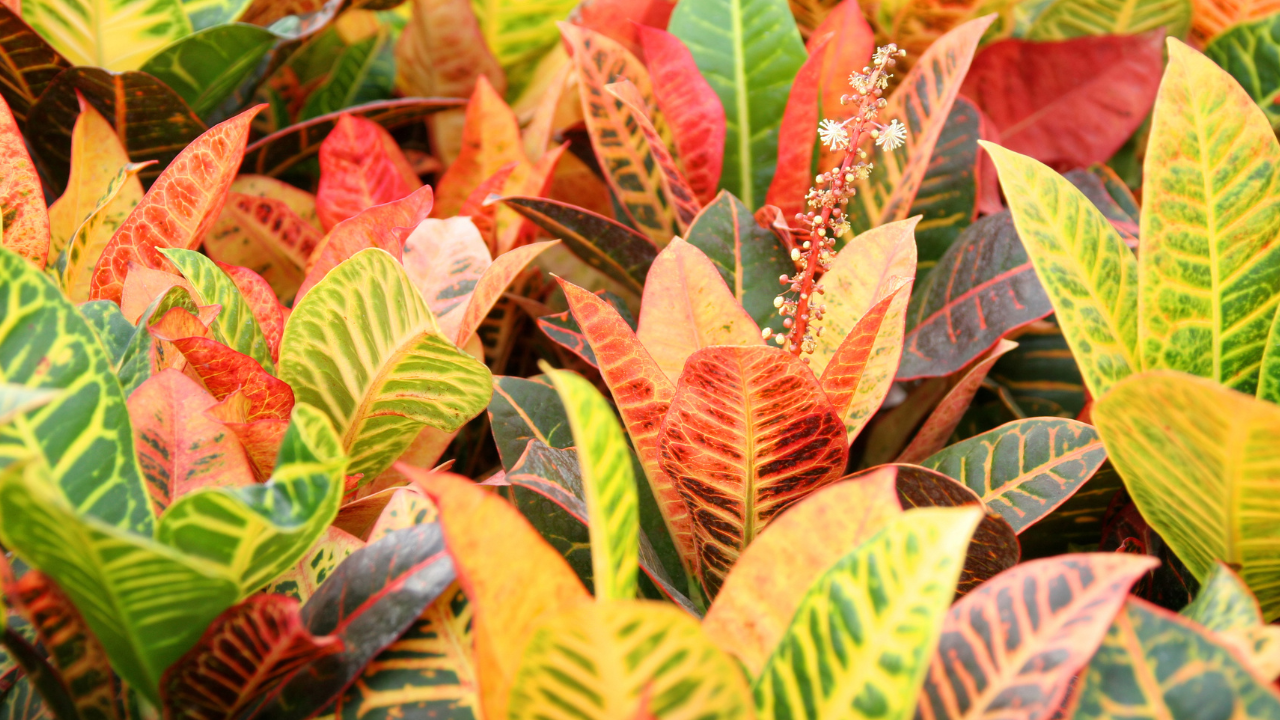Croton plants, known for their vibrant and colorful foliage, are a favorite among houseplant enthusiasts. Native to tropical regions, these plants bring a touch of the exotic to any indoor space. Proper care is essential to maintain their striking appearance and health. This guide covers ten crucial aspects of croton plant care, helping you keep your croton thriving and beautiful.
Light Requirements
Croton plants thrive in bright, indirect light. They need ample sunlight to maintain their vibrant colors, so placing them near a south or west-facing window is ideal. However, direct sunlight for prolonged periods can scorch their leaves, so it’s important to find a balance.
If your croton isn’t receiving enough light, its colors may fade, and it may become leggy. Conversely, too much direct sunlight can cause leaf burn. Using sheer curtains to filter the sunlight or moving the plant slightly away from the window can help provide the perfect lighting conditions.
Watering Needs
Crotons prefer a consistent watering schedule but are sensitive to overwatering. The soil should be kept evenly moist but not waterlogged. Allow the top inch of soil to dry out before watering again to prevent root rot, a common issue with crotons.
During the growing season (spring and summer), crotons may require more frequent watering compared to the dormant season (fall and winter). It’s also beneficial to use lukewarm water, as cold water can shock the plant. Using a moisture meter can help you determine the right time to water your croton.
Humidity Levels
Crotons thrive in high humidity environments, similar to their native tropical habitats. Maintaining humidity levels between 40-80% is ideal. Dry indoor air, especially during winter, can lead to leaf drop and browning edges.
To increase humidity around your croton, you can use a humidifier, place a tray of water near the plant, or mist the leaves regularly. Grouping crotons with other humidity-loving plants can also create a more favorable microenvironment.
Temperature Preferences
Croton plants prefer warm temperatures, ideally between 60-85°F (15-29°C). They are sensitive to cold drafts and sudden temperature changes, which can cause stress and lead to leaf drop.
It’s crucial to avoid placing your croton near drafty windows, air conditioning vents, or heaters. Consistent temperatures will help your croton maintain its health and vibrant foliage.
Soil and Potting
Well-draining soil is essential for crotons. A mix of peat, perlite, and pine bark works well, providing the right balance of moisture retention and drainage. Ensure the pot has drainage holes to prevent water from sitting at the bottom, which can cause root rot.
Repotting your croton every 1-2 years is beneficial to refresh the soil and provide more room for growth. When repotting, choose a pot that is one size larger to accommodate the expanding root system.
Fertilizing Schedule
Regular feeding during the growing season helps crotons maintain their vibrant foliage. Use a balanced, water-soluble fertilizer every 4-6 weeks from spring through summer. In fall and winter, reduce feeding to avoid excessive growth when the plant is dormant.
Over-fertilizing can lead to salt buildup in the soil, which can damage the roots and affect the plant’s overall health. It’s important to follow the manufacturer’s instructions and occasionally flush the soil with water to prevent this buildup.
Pruning and Maintenance
Pruning is essential for maintaining the shape and health of your croton. Regularly remove dead or yellowing leaves to promote new growth and prevent disease. Pruning can also help control the size of your plant and encourage bushier growth.
Use clean, sharp scissors or pruning shears to avoid damaging the plant. It’s also a good practice to prune in the spring or summer when the plant is actively growing, allowing it to recover more quickly.
Pest Control
Crotons can be susceptible to pests such as spider mites, mealybugs, and scale. Regularly inspecting your plant and maintaining proper care can help prevent infestations. Signs of pest issues include webbing, sticky residue, and discolored leaves.
If you notice pests, isolate the affected plant and treat it with insecticidal soap or neem oil. Wiping the leaves with a damp cloth can also help remove pests and keep your plant healthy.
Propagation Methods
Crotons can be propagated through stem cuttings, which is a great way to produce new plants. Take a cutting from a healthy croton, ensuring it has at least one node. Remove the lower leaves and place the cutting in water or moist soil.
Keep the cutting in a warm, humid environment until roots develop. Once the roots are established, transfer the cutting to a pot with well-draining soil and care for it as you would a mature croton.
Common Issues and Solutions
Yellowing leaves, leaf drop, and faded colors are common issues with crotons, often resulting from improper care. Ensure your croton is receiving the right amount of light, water, and humidity. Adjusting these factors can often resolve these problems.
Stress from repotting or environmental changes can also cause issues. Allow your croton time to acclimate and recover, and continue providing consistent care. Regularly inspecting your plant and addressing issues promptly will help keep your croton healthy and vibrant.
With the right care, crotons can be a stunning addition to your indoor plant collection. By understanding and addressing their specific needs, you can enjoy their colorful foliage for years to come.

